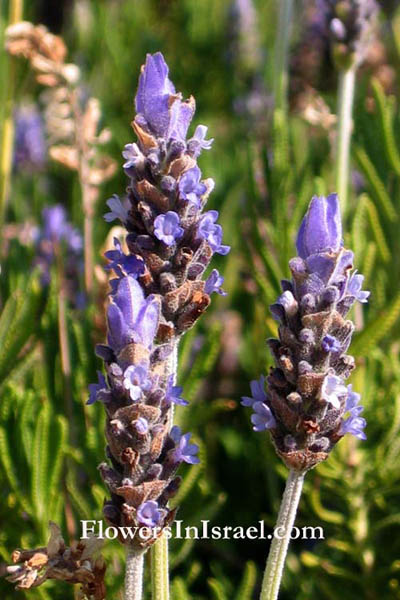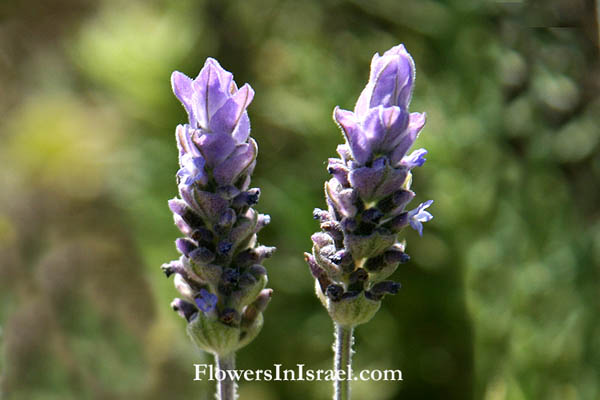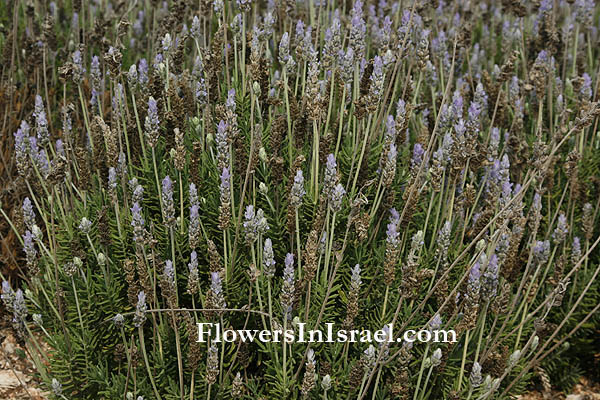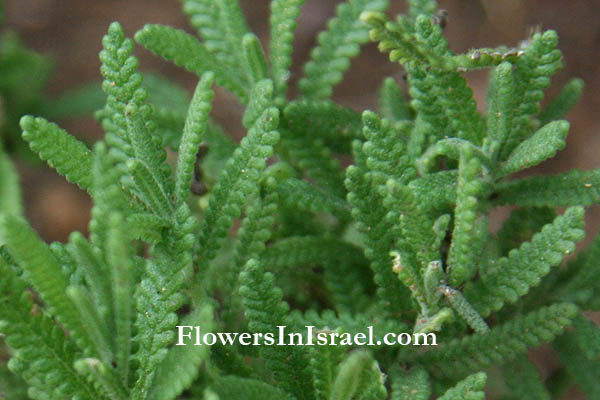Hebrew: אזוביון משונן, Arabic: الضرم المسنن
| Scientific name: | Lavandula dentata L. | |
| Synonym name: | Stoechas dentata (L.) Mill., Lavandula dentata var. vulgaris Ging. | |
| Common name: | French Lavender, Fringed Lavender | |
| Hebrew name: | אזוביון משונן | |
| Arabic name: | الضرم المسنن | |
| Family: | Labiatae / Lamiaceae, שפתניים |

|
| Life form: | Chamaephyte | |
| Stems: | Up to 100 cm; upright branches | |
| Leaves: | Opposite, grayish-green, entire, serrated margin | |
| Inflorescence: | Terminal clusters of flowerheads, two crowded clusters opposite each other going up the stem (verticillastrate) | |
| Flowers: | Violet-blue, papery bracts; paler violet-blue flowers | |
| Fruits / pods: | Schizocarps | |
| Flowering Period: | March, April | |
| Habitat: | Hard rock outcrops | |
| Distribution: | Hard rock outcrops, Edom | |
| Chorotype: | Mediterranean | |
| Summer shedding: | Perennating |

Derivation of the botanical name: Lavandula, Latin, lavare, meaning "to wash," and refers to the Roman custom of scenting bath water with the leaves and flowers of this aromatic plant. dentata, toothed, with teeth. Stoechas, The Hebrew name: אזוביון, ezovion, (Post Biblical Hebrew) lavender; perhaps diminutive formed from אזוב,ezov.

Location: Carmel, Ramat Hanadiv 
Location: Carmel, Ramat Hanadiv |